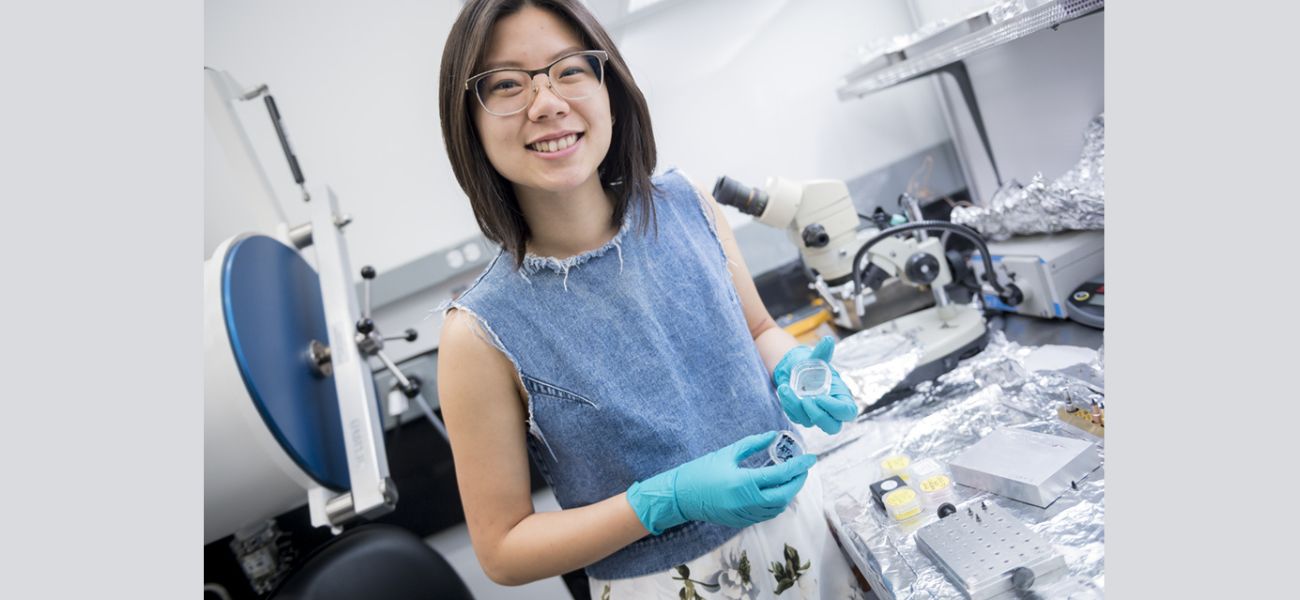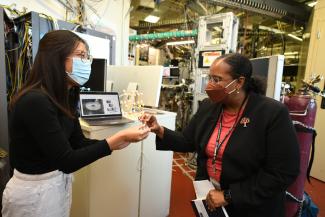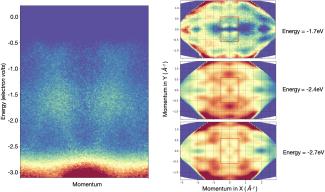
A joint PhD student traversing between UBC’s Stewart Blusson Quantum Matter Institute in Vancouver and the Max Planck Institute for Solid State Research in Germany, Cissy Suen conducts research that delves into the fascinating realm of quantum materials, and their promising applications and implications. Suen’s approach to research, however, extends far beyond the lab. She champions the power of science communication as a bridge between researchers and the wider community, striving to make the complex world of quantum materials accessible and engaging for everyone.
Suen faces a unique challenge: while many people already struggle to grasp the complexities of quantum computing, the concept of quantum materials presents an even greater challenge. This is partly because computing has become commonplace, with most individuals having some experience with software and computers, providing a foundation for understanding. In contrast, quantum materials remain much less familiar. Despite their less obvious function, Suen emphasizes the crucial role of materials in making these quantum technologies possible. She tackles this challenge with relatable examples — the transistors in your phone, the semiconductors in your car — and highlighting how these everyday technologies were created from groundbreaking quantum materials research. This helps lay a foundation for understanding their critical role in future advancements.

Suen advocates for the early integration of quantum concepts into childhood education. Reflecting on the many decades it took to implement coding into the education system, long after the transformative impact of the internet and computing, Suen stresses the importance of teaching quantum concepts as part of the foundation of learning. "We should not repeat the mistake of delaying the adoption of coding in our education system as the technology rapidly rises and integrates in our society," Suen emphasizes. Her article in the Toronto Star proposes that grade-school curriculum developers introduce quantum literacy in math curriculums, with the long-term outlook that this will ultimately contribute towards fostering stronger industry-academic partnerships, as well as public awareness to combat potential misinformation. "Many quantum concepts remain outside the [current] scope of conventional education. This creates a bottleneck where the business sector lacks the necessary scientific background, and scientists struggle to advocate for their ideas within the economic landscape." One of the biggest challenges is to decipher how this research can be applied to various fields. When we integrate these concepts into the curriculum, we can lay the foundation for initiating discussions on future applications for quantum technologies” she stresses.
Suen also recognizes the importance of traditional science communication methods. "Often overlooked," she shares, "is the simple yet powerful act of tailoring communication to specific audiences and communities, connecting with them in a way that resonates with their own understanding."
For instance, she adopts a social-economic approach, to discuss quantum materials with social scientists, and highlights the potential impact on society, geopolitics and the economy. By embedding these concepts into relatable contexts, Suen sparks broader interest and engagement in the field.
A proponent of art-based methods to convey complex scientific ideas, for example, in her recent Science Slam performance she used electron paintings to describe how she measures election behaviour in her research. She also provides the example of the Ars Scientia program at Blusson QMI, championed by Dr. James Day, where artists collaborate with scientists to create research-based art. Beyond academia, Suen actively engages in science policy, authoring a policy brief that focus on enhancing the quantum industry in Canada and its trajectory. This is also evident in her other endeavors, like the SPE Talks podcast from Science and Policy Exchange, where she previously hosted interviews with experts from academia, industry and government to discuss how they engage in science policy. She sees policy science as a "gateway for knowledge exchange," ensuring scientific understanding informs future directions.

Her enthusiasm for knowledge exchange also extends to her commitment to help others build similar skills. She organizes the ComSciConCAN, a national science communication conference, which brings students across Canada together to share experiences, learn and develop skills in knowledge exchange, viewing this as a crucial platform to foster a collaborative and engaged science communication community.
She also emphasizes experimentation, to find what works for individuals, and to have fun with the process. "For me, it was policy and art. So, I pursued those avenues” shares Suen. She encourages learning from others and engaging with different disciplines to spark new ideas and approaches -
“I wish I had learned more about how others engage in knowledge exchange earlier in my PhD. Learning about these concepts, especially through interdisciplinary discussions and training programs such as the KxM Research to Impact, opened new perspectives on how it can be done effectively. Engaging with different disciplines can spark ideas on how to adapt similar engagement strategies into physics.”
Kx takeaways:
- Science communication is about more than explaining complex ideas; it’s also about sparking interest, building bridges and fostering connections.
- Leverage diverse KxM resources, workshops and courses from other disciplines to build your overall KxM skills.
- Managing time effectively between research and other pursuits is crucial – “I could have had more research output without these activities” admits Suen, “but these KxM activities make me happy and are important to me. It is about finding what works best for you while having fun with it.”